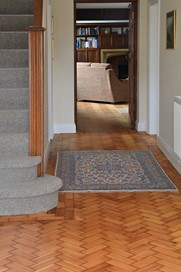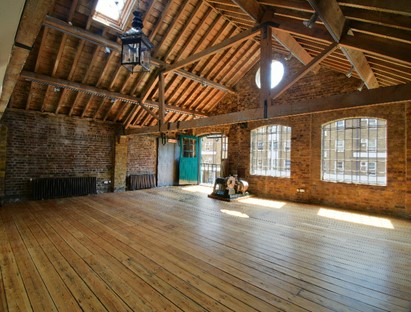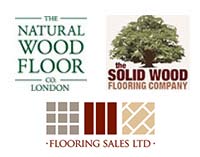A gentleman recently asked us if we could revive his pinewood floor. He told us HS Wood Flooring, along with other flooring companies, seem to mention hardwood floors exclusively, nothing about Softwood floors.
As it happens, we have renovated lots of pine wood floors and we’ll come back to that. This enquiry raises questions about the hardness of wood; this varies immensely from Australian Buloka to Balsa.
Classifying hardness
The standard is established by a Janka Hardness Test. It measures the resistance of 11.28mm spherical steel ball being punched into the surface of the wood on trial. The deeper it penetrates, the softer the wood. The scale is measured in units of weight/force.
Let’s take ebony as our base. Ebony is so dense, it doesn’t float in water, it sinks! There are many harder woods but some are so rare you probably won’t have heard of them. So, Ebony is our base and we will give it a factor of 100. Then mahogany is 42, English Oak is 34, Pine is 13 and, just for illustration, Balsa is less than 1. Oak is classified as a hardwood; Pine is a softwood.
Why Pine?
This begs the question: why fit a Pine wood floor when you could fit something more durable? In the 19th an early 20th centuries, the working and clerical population needed affordable housing. Pine was readily available and inexpensive. So pine was extensively used. But that’s not such a bad thing: even nowadays, properly treated and protectively finished, a Pine floor will last upwards of 20 years. And, when finished, has a glorious golden radiance all of its own. The problem is that it scuffs and dents easily. This was overcome by carpeting, a northern hemisphere custom to retain warmth in the absence of central heating. Today, no builder would build a house without heating so, today, the need for carpets is far more for design and tradition rather than functional warmth.
Bringing a tear to one’s eye
In recent years, sales of carpets have significantly declined with many people preferring the continental style offered by variety of floor designs that wood can achieve. And this brings us to the biggest problem with carpets: they are the perfect repository for germs, bugs, dust, dead skin and many more horrors! Our team have to wear masks when a carpet has to be lifted and dispensed it safely. The process literally brings tears to one’s eyes. But what lies underneath can be a veritable treasure.
Here are two examples:
Limehouse, East London. Here’s another example: this is the floor of an early 19th century warehouse. It has been there over 200 years and survived the spills and scrapes of a busy wine repository as well as the blitz of WW2. We were instructed by the owners to keep the integrity of the original floor so we hand-sanded and lacquered the Pine to a lustrous finish. It is now a wonderful living room space with 10,000 books lining the walls.
Thank you.
About half our business concerns the renovation of wood floors – hard and soft. If we can save a floor, we can save a tree.
So, to the kind gentleman who brought this matter to our attention, we say: yes, Sir! We bring out the best is soft woods, too!









